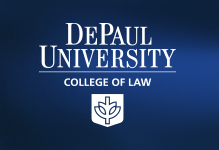Home > Law > DePaul Law Review > Vol. 64 > Iss. 2
Abstract
This Article has been stimulated by the work of Professor Walter Murphy (Elements of Judicial Strategy) who employed the papers of United States Supreme Court justices to examine the ways a justice might go about increasing his influence on the shaping of public policy. Murphy suggested the strategies and tactics—conscious and unconscious—by which a justice might reach that end.
This Article applies Murphy’s model to federal district judges, examining how one of the most distinguished, Judge Jack B. Weinstein, has employed the tools open to a federal trial judge. Judge Weinstein, of the U.S. District Court for the Eastern District of New York for forty-eight years, was not chosen because he is a typical district judge. On the contrary, he is a policy-oriented judge with striking abilities and immense energy who has been extraordinarily creative in his use of judicial power and remarkably innovative in his approach to both law and procedure.
Among the earmarks of Judge Weinstein’s work has been taking the initiative from the attorneys, sometimes narrowing the scope of the issues before him, sometimes widening them, while in major cases trying to keep a broad array of parties and experts in the case and expecting that the attorneys before him will employ innovative substantive norms. In long, deeply thought-through and elegant opinions, Judge Weinstein has dug deeply into problems in order to provide illumination for judges and magistrate judges facing the same or similar difficult issues. He also has had the knack of getting visibility for his ideas.
Judge Weinstein’s persuasiveness has also been manifest by his authoring treatises, casebooks, and many hundreds of law review articles and speeches dealing with jurisprudential problems and/or the administration of justice.
Beyond his persuasive abilities, Judge Weinstein’s efficacy has also been the result of the affect of an unusually attractive personality on his colleagues, the academic community, and many others.
Recommended Citation
Jeffrey B. Morris,
Jack Weinstein: Judicial Strategist,
64
DePaul L. Rev.
(2015)
Available at:
https://via.library.depaul.edu/law-review/vol64/iss2/4

